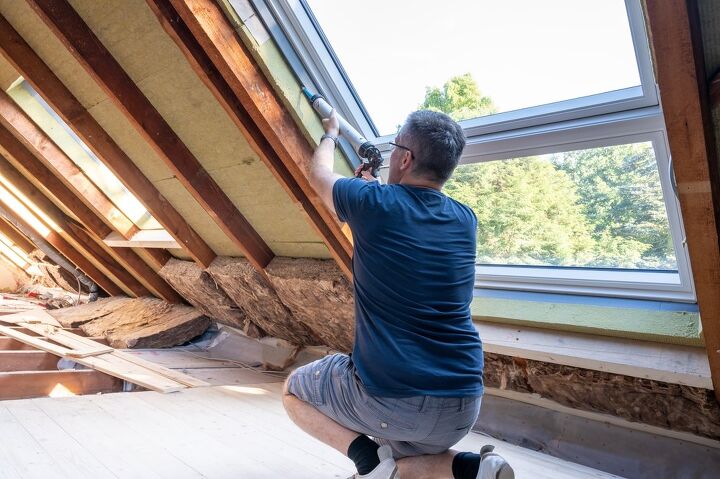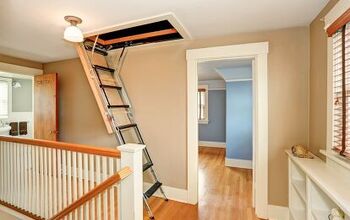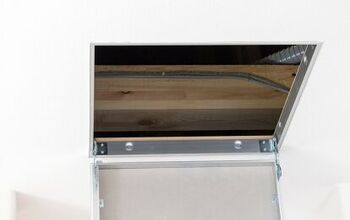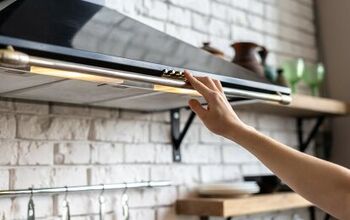Is Air Sealing The Attic Worth It? (Find Out Now!)

The attic is one of the areas of any home that affects your utility costs. The space is ideal for air leaks, both from inside your home and from the outside. Air sealing is a technique that prevents air loss, but is it really worth it?
Yes. Sealing your attic is one of the best ways to reduce energy use. The less energy you use, the lower your utility bills every month. Air sealing an attic also helps to maintain temperatures throughout your home. The project costs $1,000 to $4,500, and the month is returned when you spend less on heating and cooling.
Let’s take a closer look at air sealing an attic, how it works, and what to expect.
Do You Need Insulation Installers?
Get free, zero-commitment quotes from pro contractors near you.

What is Air Sealing?
Air sealing an attic is a technique that seals any openings that allow air to escape to the outside. Sealing an attic also prevents outdoor air from coming into your home. Most attics have small openings that are not closed during construction. Older homes get drafty over time, and even newer homes may not have sealed attics.
How Does Attic Air Get into a House?
Air from your attic gets into your house in two ways. First, there may be return ducts for your HVAC system in the attic. Any holes in the ducts allow air from the attic to get inside your home. Second, air from the attic comes into your house through openings around light fixtures, ductwork, and electrical boxes.
Why Air Should Not Flow Between the Attic and Interior
Besides the energy loss, there are other reasons why you don’t want air flowing from the attic into your home and vice versa. Attic air is not filtered. It contains fiberglass, pest droppings, mold, and possibly asbestos fibers. Air from inside your home has a higher humidity level. When it gets inside your attic, it dampens wood and other materials. This leads to mold growth and rotting.
Why Should an Attic Be Sealed?
Most homes that don’t have sealed attics have up to 85% heat loss through openings in the attic. When you air seal the attic, heat loss is significantly reduced. This translates into savings on your energy bills each month.
Air Sealing Attic Savings
According to the US Department of Energy, homeowners see a 10% to 50% reduction in energy costs each month. The reason for the savings is that the heated and cooled air from the HVAC system stays inside your home. This means that your HVAC equipment doesn’t have to run as often to maintain a comfortable temperature.
Do I Need to Air Seal My Attic?
Even if you are comfortable with the cost of heating and cooling, air sealing an attic offers other benefits.
- Evens out temperatures throughout your home – no more hot and cold spots
- Eliminates drafts
- Keeps a healthy humidity level during the winter
- Reduces the risk of ice dams
- Minimizes dust inside your home – less cleaning and allergies
Is Air Sealing More Important Than Insulation?
Air sealing is not more important than insulation. Air sealing and insulation work together to prevent heat loss in your home. Insulation, though, is the primary method.
Is Your Attic Air Sealed?
There are a few very quick and easy ways to check if your attic is air sealed. Hold a flashlight up to a light in the ceiling just below your attic. If you see dust floating out of the lights, chances are that your attic is not air sealed.
Another method that works well is to check the insulation in the attic. Shine a flashlight across the insulation. You want to see an even layer that is level with the top of the joists.
How to Find an Air Leak in the Attic
Air leaks in attics typically occur around any openings in the drywall. The best place to look is in the ceiling of your attic. You may need to pull the insulation back. Check around cutouts to see if they are sealed. If not, you have an air leak.
How to Air Seal an Attic
Air sealing an attic simply means sealing any openings. This includes between the attic roof and outside, as well as between the attic floor and the ceiling inside your home. Can the job be done as a DIY project or only by a professional? That depends.
Air Sealing Attic DIY
Under normal circumstances, air sealing an attic is an easy DIY job. There are some situations where the work should only be done by a professional contractor.
- Mold and rot inside the attic
- Pre-1930 knob and tube wiring (fire hazard)
- Roof leaks and damp insulation
- Air vents in the bathroom, kitchen, or laundry room that vent directly into the attic
- Poor ventilation in the attic
- Difficult access to the attic
- Small attic space to work
Air Sealing Attic with Spray Foam
If you decide to air seal your attic, all you need is some spray foam. Check at your local hardware or home improvement store. Make sure to get spray foam that is specifically for air sealing attics.
Spray the foam in the openings and crevices. Don’t overdo it. The foam expands to fill the space. If the foam expands beyond the opening, let it dry. You can go back and trim any excess once it is set. Make sure not to remove too much.
Air Sealing Attic Recessed Lights
Spray foam is not ideal for recessed lights. Instead, use batt or loose-fill insulation for IC-rated recessed lights. The insulation should go between the ceiling and canister.
Air Sealing Attic Door
Don’t forget your attic door and hatch. Use caulk and foam sealant for the trim area. Apply weather-stripping along the edge where the hatch door rests when closed. As an alternative, you can find gaskets that are more durable than weather-stripping. Last, add 4” to 8” of foam board to the attic-side of the hatch.
How Much Does It Cost to Air Seal an Attic?
The cost for professional air sealing of an attic is $1,000 to $4,500. Check with your state’s Weatherization Assistance Program to see if you qualify for financial assistance to air seal your attic.
Should I Replace the Old Insulation?
On average, insulation lasts 80 to 100 years. Fiberglass batt, though, starts to break down after 15 to 20 years. Replacing this type of insulation after about 10 years is always a good idea. It keeps your house insulated and prevents heat loss.
Insulation Replacement Cost
Expect to pay $2 to $9 per square foot for new insulation. This includes the cost of labor. When you’re replacing the batt, add a layer of spray foam or blown-in insulation for additional protection. The total cost is about $1,700 to $2,100 for an average size attic.
Related Questions
What are the most common types of insulation?
The most common types of insulation for homes are loose-fill and batts. The insulation is made from fiberglass, mineral wool, cellulose, or cotton.
Do You Need Insulation Installers?
Get free, zero-commitment quotes from pro contractors near you.

Conclusion
Air sealing your attic is worth it. It only costs $1,000 to $4,500 to have a professional do the work. You may qualify for help under your state Weatherization Assistance Program. The return on your investment is 10% to 50% reduction in energy costs. You’ll also enjoy less dust, reduced risk of mold, and greater comfort.
Related Guide

Jennifer L. Eggerton loves being hands-on, whether it's with a home DIY project, making repairs, re-decorating a room, or keeping life organized. She enjoys helping people by sharing her knowledge, insights, and experiences, as well as her lessons learned. In addition to her work as a writer, Jennifer is a Jeep® overlander, self-published author, and nature photographer who loves being outdoors.
More by Jennifer Eggerton



























